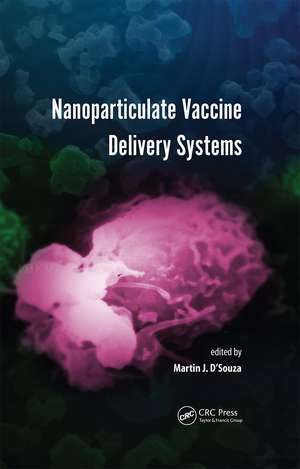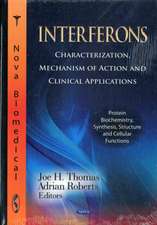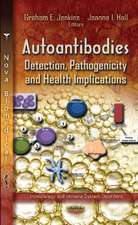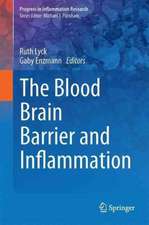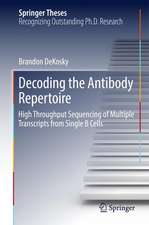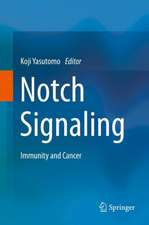Nanoparticulate Vaccine Delivery Systems
Editat de Martin J. D'Souzaen Limba Engleză Hardback – iun 2015
Preț: 892.16 lei
Preț vechi: 1088.00 lei
-18% Nou
Puncte Express: 1338
Preț estimativ în valută:
170.74€ • 177.59$ • 140.95£
170.74€ • 177.59$ • 140.95£
Carte tipărită la comandă
Livrare economică 14-28 aprilie
Preluare comenzi: 021 569.72.76
Specificații
ISBN-13: 9789814613309
ISBN-10: 9814613304
Pagini: 244
Ilustrații: 61 black & white illustrations, 19 colour illustrations
Dimensiuni: 174 x 246 x 20 mm
Greutate: 0.48 kg
Ediția:1
Editura: Jenny Stanford Publishing
Colecția Jenny Stanford Publishing
ISBN-10: 9814613304
Pagini: 244
Ilustrații: 61 black & white illustrations, 19 colour illustrations
Dimensiuni: 174 x 246 x 20 mm
Greutate: 0.48 kg
Ediția:1
Editura: Jenny Stanford Publishing
Colecția Jenny Stanford Publishing
Public țintă
Academic and PostgraduateCuprins
Introduction to Particulate Vaccine. Methods of Preparation of Nanoparticulate Vaccines. DOE. Routes of Administration. Case Studies. Meningitis Vaccine. TB Oral Vaccine. Cancer Vaccines. Influenza Vaccine. Melanoma Vaccine. Ovarian Cancer Oral Vaccine. Breast Cancer Oral Immunotherapy. Prostate Cancer Vaccine for Oral Delivery. Future Trends in Vaccine Delivery.
Notă biografică
Martin J. D’Souza is professor and director of Graduate Programs, College of Pharmacy, Mercer University, USA, co-director of the Center for Drug Delivery, and director of the Mercer Clinical Laboratory. He has published more than 90 articles in various journals and authored several book chapters and holds four patents. Prof. D’Souza’s research interests are in vaccines for infectious diseases and cancer.
Recenzii
"This book provides a detailed examination of the design, characterization, delivery, and efficacy of nanoparticulate vaccine delivery systems. It provides an excellent overview with in-depth case studies on the growing literature on novel vaccine delivery systems using nanoparticles."
—Prof. Mark Prausnitz, Georgia Institute of Technology, USA
"Readers will find introductory chapters on preparatory methods for micro/nanoparticles and formulation development and how these delivery systems interact with the immune system, followed by goal-orientated and detailed laboratory studies on nanoparticulate-based prokaryotic vaccines and cancer vaccines. Notably, the book provides several methods for non-parenteral antigen delivery, which is becoming increasingly important, particularly for the latest-generation vaccines against mucosal pathogens."
—Prof. Myron Christodoulides, University of Southampton, UK
"This book is a compelling force in the field of antigen delivery for infectious disease as well as cancer. It represents a thorough exploration of the nanoparticle’s ability to encapsulate diverse antigens, and immunostimulants, and deliver this payload to antigen-presenting cells, inducing an ensuing effective immune response."
—Prof. Gary W. Bumgarner, Samford University, USA
—Prof. Mark Prausnitz, Georgia Institute of Technology, USA
"Readers will find introductory chapters on preparatory methods for micro/nanoparticles and formulation development and how these delivery systems interact with the immune system, followed by goal-orientated and detailed laboratory studies on nanoparticulate-based prokaryotic vaccines and cancer vaccines. Notably, the book provides several methods for non-parenteral antigen delivery, which is becoming increasingly important, particularly for the latest-generation vaccines against mucosal pathogens."
—Prof. Myron Christodoulides, University of Southampton, UK
"This book is a compelling force in the field of antigen delivery for infectious disease as well as cancer. It represents a thorough exploration of the nanoparticle’s ability to encapsulate diverse antigens, and immunostimulants, and deliver this payload to antigen-presenting cells, inducing an ensuing effective immune response."
—Prof. Gary W. Bumgarner, Samford University, USA
Descriere
Recent years have seen the development of novel technologies that use nanoparticles and microparticles to deliver vaccines by the oral and microneedle-based transdermal route of administration. These new technologies enable the formulation of vaccine particles containing vaccine antigens, without loss of their biological activity during the formulation process. This book discusses studies conducted on a wide array of vaccines, including vaccines for infectious diseases such as tuberculosis, typhoid, influenza, pneumonia, meningitis, human papillomavirus, and hepatitis B. It also discusses recent studies on vaccines for cancers such as melanoma and ovarian, breast, and prostate cancer.
